Japanese Martial Arts: The Complete Guide to the Best Styles
Japanese martial arts have evolved from samurai techniques and ancient arts to global sports and widely practiced disciplines. This post will guide you through the most popular Japanese martial arts and discuss styles such as Kendo, Judo, Karate, Kyudo, Aikido, and Sumo wrestling. Japanese martial arts represent the country’s dedication to growth and self-discipline and have been refined through the centuries. Prepare to trace the paths of Japanese martial arts, from ancient dojos to international tournaments, and their legendary lessons beyond the battlefield.
The Essence of Japanese Martial Arts
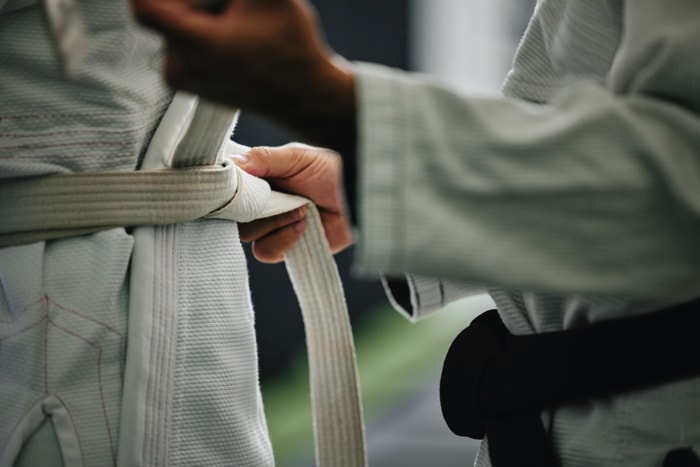
Japanese martial arts are deeply connected to Zen, giving them a strong focus on peace and spiritual growth. This idea of Zen is paired with the physical and technical training that Japanese martial arts offer. ‘Budo,’ the martial way, is another Japanese idea that is also integrated with the concept of Zen. Practicing Budo within martial arts training means a dedication to the refinement of character and spirit through adherence to a set of moral values. Japanese martial arts often emphasize the two ideas of Zen and Budo within the dojo. This is done to make sure the students become more respectful and improve their character and mental state, as well as their overall physical capabilities.
Teaching Zen and Budo is part of traditional Japanese martial arts, which are not present in some modern martial arts. Though similar concepts exist in traditional Chinese martial arts, the practice of these concepts is one of the main reasons why Japanese martial arts attract so many new students. Many martial artists seek ways to improve their character and mental state, and some even find that they can achieve this by following the two key concepts of Zen and Budo.
The Pillars of Traditional Japanese Martial Arts
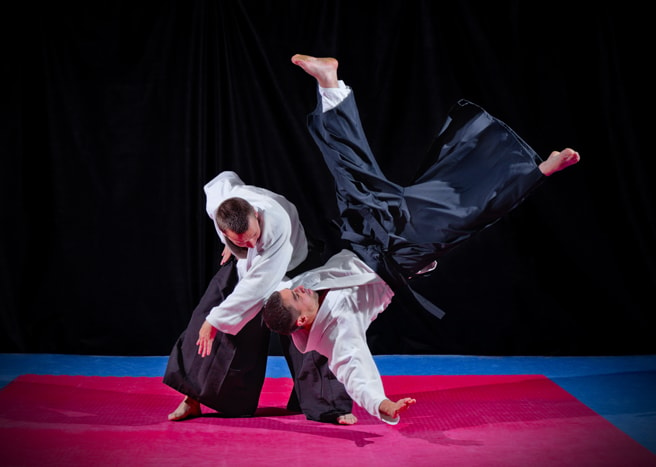
Japanese martial arts also have their roots in the warrior traditions of the samurai. The martial arts in Japan have a history of restricting the use of weapons. This was enforced so that regular citizens would not practice the use of weapons, and only Samurai members were allowed to use them.
Modern Japanese martial arts are generally known as ‘gendai budō,’ and the martial arts became commonly practiced by Japanese citizens for personal development and self-defense. Japanese martial arts like Karate, Kyudo, and Judo are classified as ‘gendai budō,’ however, this is a term given to them after 1866, which means these martial arts are actually quite old and still very traditional.
The organizational structure and learning methodology in Japanese martial arts schools, known as ‘ryū,’ are characterized by a hierarchy that places ‘sensei’ at the top, followed by a system of ‘senpai’ (seniors) and ‘kōhai’ (juniors). This hierarchy creates disciplined learning and mutual respect, showing how these arts have transitioned from samurai-era combat skills to diverse forms of practice that preserve ancient techniques and Japanese culture.
Samurai Warriors and Bushido: The Warrior’s Way
Bushido, translated as ‘way of the warrior,’ is a code of conduct and ethics that greatly shaped the ethos of Japanese martial arts from its formalization during the Edo period. The earliest texts, such as the Koyo Gunkan, describe Bushido values such as honesty, compassion, and loyalty, which the samurai class embodied along with sincerity, frugality, martial arts mastery, and honor until death.
While initially focusing on combat, valor, and loyalty to one’s lord, Bushido later integrated Confucian ethics like honor and humanity. However, during the Meiji era, these principles were adapted to emphasize loyalty to the Emperor.
Today, the samurai culture and the principles of Bushido continue to inspire martial artists worldwide, significantly influencing contemporary Japanese martial arts and shaping the philosophical approach to combat and practice.
Karate: The Way of the Empty Hand
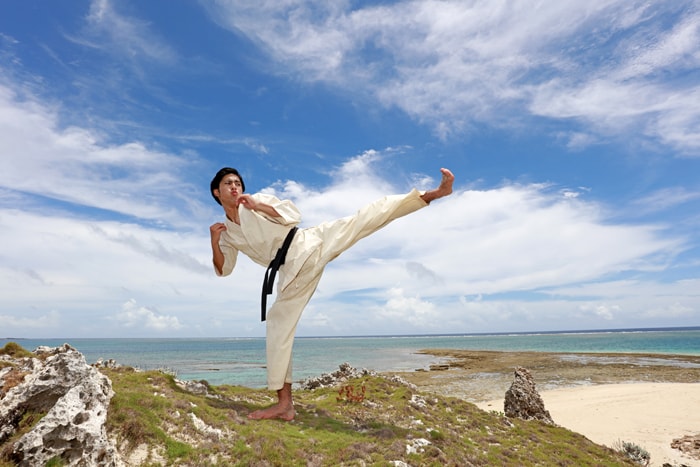
Karate, meaning ‘empty hand,’ is a striking art developed in the early 20th century with influences from:
- Chinese Kung Fu
- Okinawa’s indigenous fighting techniques
- Northern China’s Shaolin kung-fu
- Southern China’s Shokei school
These martial arts styles heavily influenced karate in Japan during the 1920s.
Karate has become one of the most recognized martial arts globally, with approximately 100 million practitioners across five continents. Internationally, Karate’s progress is signified by a belt system adopted since the early 1900s, echoing its widespread adoption and structured approach to grading practitioners. Karate’s official Olympic debut was at the Tokyo 2020 Olympics, highlighting its international appeal and recognition as a competitive sport.
The five main styles of karate that are widely practiced in Japan are:
- Shito-ryu
- Wado-ryu
- Shotokan-ryu
- Goju-ryu
- Kyokushin Karate
All of these styles utilize punches, kicks, and blocks in offensive and defensive techniques. However, they have differences in the way they are practiced, as some are more traditional, with an emphasis on kata (forms), like Goju Ryu karate, while others, like Kyokushin karate, practice more for competitions and sports.
Practitioners of Karate focus on linear punching and kicking techniques executed from stable stances; some styles of Karate also include techniques for grappling, locks, restraints, and throws.
Karate is varied in the way that it is practiced, with so many different schools and styles worldwide; however, the basic punches are often quite similar. The differences lie in the forms, practices, and, most of all, whether karate has been adapted for sports or not. Kyokushin karate is a perfect example of a type of sports karate; although some believe it resembles kickboxing, the actual practice of the martial art still resembles karate.
Overall, karate is the most well-known of the Japanese martial arts, and for good reason. It is diverse in techniques with many styles, and most of all, it is an effective martial art. Karate students worldwide have been dedicated to the martial art, and it has a strong presence in the media, which has helped increase the number of practitioners worldwide.
Judo: The Art of Throwing
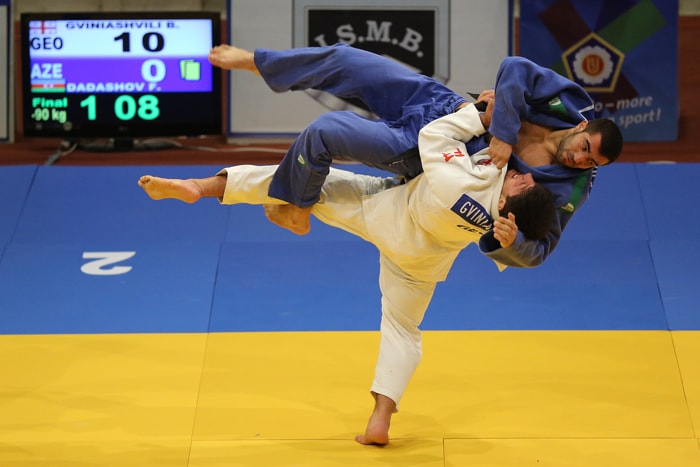
Judo is a martial art that evolved from Japanese jujutsu. It emphasizes combat without weapons, and the essential idea of Judo is to harness an opponent’s power against them. Grandmaster Jigoro Kano developed Judo with a strong philosophical foundation, aiming to balance the spiritual and physical aspects. Judo, which means ‘gentle way’ in Japanese, was deeply influenced by Kano’s vision of a disciplined martial art that also promotes self-improvement.
The key principle of Judo is using leverage and timing to execute throws and sweeps, with a particular focus on:
- full throws
- submissions
- grappling
- pins
- joint locks
In contrast to other martial arts, which use striking as their primary means of offense, Judo places full emphasis on grapples, pins, and joint locks to gain a victory. This means there is no striking in Judo, and it is purely a grappling martial art.
Judo gained international recognition when it became an official Olympic sport at the Tokyo Olympics in 1964. The principles and techniques of Judo played a foundational role in the creation of Brazilian Jiu-Jitsu, a modern martial art that has become very popular in recent years.
The effectiveness of Judo has become very evident as it has taken the spotlight in competitive sports. It is widely respected in the martial arts world and has a great following outside of Japan, especially as some MMA fighters use Judo as the foundation for their fighting style.
Aikido: The Art of Peace
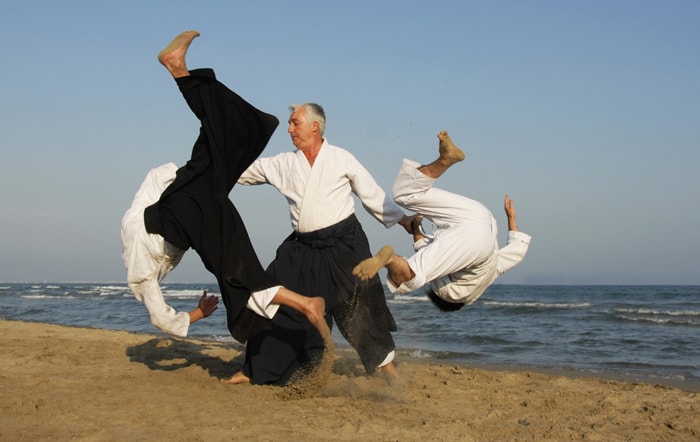
Aikido was founded by Morihei Ueshiba in the 1920s, who developed the art after synthesizing various styles of jujutsu and introducing it to numerous countries worldwide throughout the 20th century. Morihei Ueshiba’s philosophy for Aikido was centered around peace and spirituality, combining martial arts, weapons practice, prayer, and ritual with underlying Neo-Shinto philosophies to cultivate love and aid others.
Techniques in Aikido are mainly non-aggressive, using distinct circle movements and wrist or arm-joint grabs to control an opponent by redirecting their energy without harming either party. This idea perfectly embodies Ueshiba’s belief in resolving conflict without violence.
Currently, Aikido continues to be practiced around the world, symbolizing a peaceful martial art that, despite being viewed by some as less effective against modern fighting styles, still maintains a significant following and influences many contemporary martial arts values.
Kendo: The Modern Way of the Sword
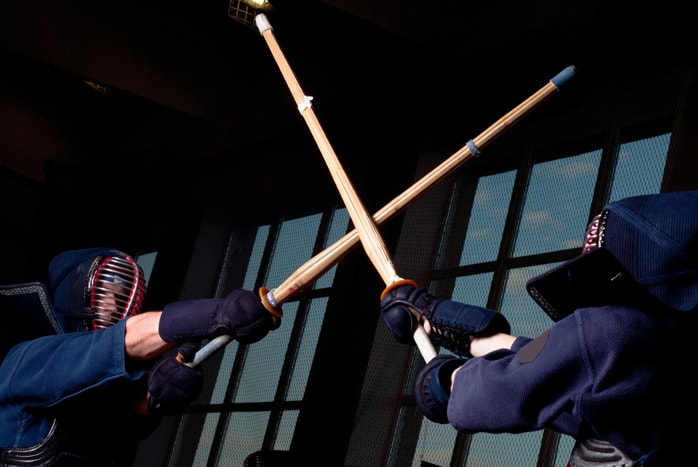
Kendo, evolving from kenjutsu, embodies the bushido spirit and represents a modern Japanese martial art that preserves the ethos of the samurai. In Kendo, the unity of body and mind through rigorous training emphasizes personal and spiritual development, aligning with the principle that Kendo is a form of budo for societal improvement.
The All Japan Kendo Federation, founded in 1951, governs the practice of Kendo, where competitions are point-based and competitors aim to strike specific parts of the body, with a grading system culminating in the challenging 8th Dan rank. The development of protective armor and the shinai for full-contact kenjutsu training during the 18th century has allowed for safe sparring, pivotal in Kendo’s methodology as a modern martial art.
Kendo is immensely popular in Japan and has a growing international presence. Its appeal lies in its deep connection to the samurai tradition and its emphasis on both physical and mental discipline. The competitive nature of Kendo, with its point-based matches and grading system, makes it an engaging and rewarding pursuit for martial artists.
Protective armor and the shinai for safe sparring have also made Kendo accessible to a wider audience, contributing to its popularity. The art of Japanese sword fighting is practiced worldwide, with organizations like the International Kendo Federation promoting its practice and creating a global community of enthusiasts.
Kyudo: Zen Archery
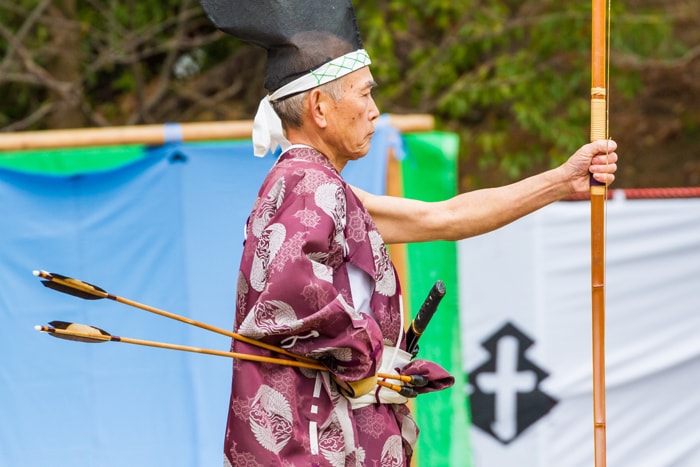
Kyudo is an archery-based martial art characterized by the unity of a precise shooting technique with deep spiritual and ethical etiquette. It emphasizes achieving a mental state of mushin, the condition of no-mind, as part of the art’s meditative practice. In Kyudo, ceremonial shooting, known as sharei, embodies the grace and solemnity of the practice, which is a visual representation of the art’s traditional etiquette that once governed samurai conduct.
Kyudo, meaning ‘the way of the bow,’ is the modern expression of Japanese archery and holds a legacy that contributes to its distinction from Western archery. It is celebrated by the International Kyudo Federation, which spans 28 member nations and is experiencing a competitive rise in popularity worldwide.
Kyudo stands out among martial arts for its unique blend of physical precision and spiritual depth. Unlike other martial arts that focus primarily on physical combat and self-defense techniques, Kyudo is deeply rooted in Zen philosophy, emphasizing mindfulness, meditation, and the pursuit of spiritual enlightenment. The ceremonial aspects of Kyudo and the strong emphasis on achieving a mediative state set it apart as a philosophical discipline. It is a martial art for those looking to achieve inner peace while practicing physical discipline.
Sumo Wrestling: Japan’s National Sport
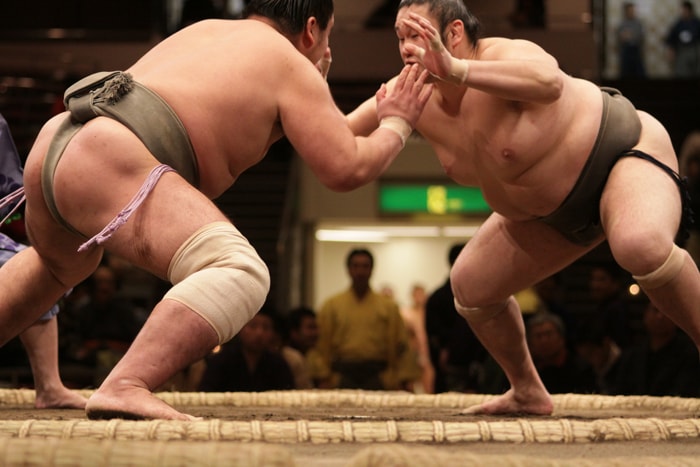
Sumo wrestling is the national sport of Japan and a cultural icon of the country. This spectacular martial art is a traditional form of full-contact wrestling that dates back over a thousand years, an ancient sport embedded in Japanese rituals and ceremonies that has roots in Shinto practices.
Sumo matches take place in a circular ring, where two wrestlers, or rikishi, attempt to force each other out of the ring or to touch the ground with any part of their body other than the soles of their feet. The wrestlers wear distinctive mawashi belts and adhere to strict traditions, including pre-match rituals like the salt-throwing ceremony to purify the ring.
Sumo wrestling is often featured in movies due to its dramatic and visually captivating nature. The sight of two massive athletes clashing in a ring, combined with the elaborate pre-match rituals, creates a spectacle that is both exotic and thrilling for audiences worldwide. The cultural richness and sheer physicality of sumo make it an appealing subject for filmmakers looking to showcase something unique and impressive.
One of the most impressive aspects of sumo wrestling is the weight of the wrestlers. Sumo wrestlers, or rikishi, are renowned for their immense size, often weighing between 300 to 400 pounds, with some even exceeding 500 pounds. This extraordinary weight is not just a result of their diet but also of a rigorous training regimen designed to build both mass and strength. The combination of their weight and their agility makes sumo wrestlers formidable opponents in the Dohyō (ring), where balance, power, and technique are crucial for victory.
Sumo wrestling is not as widely practiced internationally as karate or judo. This is primarily due to its deep cultural roots and specific traditions that are unique to Japan. The sport’s rituals and the strict training regimens of the wrestlers are deeply tied to Japanese heritage. This makes it challenging to replicate authentically outside of Japan, as the cultural aspects are difficult to learn.
Tourists visiting Japan usually go to see sumo shows to experience this fascinating cultural phenomenon firsthand. The elaborate ceremonies and impressive physical prowess of the wrestlers have made many visitors curious about Sumo wrestling.
Sumo wrestling is a cultural spectacle, reflecting Japan’s rich heritage and values of discipline, honor, and respect. Modern sumo continues to captivate audiences worldwide, with grand tournaments held six times a year.
The Global Influence of Japanese Martial Arts
There is no denying the influence Japanese martial arts have had on global combat sports and the international martial arts scene. They have become so popular that we even see them practiced in mixed martial arts, with many of the Japanese martial arts shown in Hollywood movies as well.
The best example of an extremely popular Japanese martial art is karate. It is estimated that over 100 million people worldwide practice karate, and it is one of the most widely recognized martial arts on the planet. The spread of karate internationally can be attributed to Japanese emigrants in the 1920s. Karate can be found almost anywhere in the world, with participation across five continents and in 192 countries.
Techniques from Japanese Jujutsu can be seen in the practice of Brazilian Jiu-Jitsu, showing a direct influence of Japanese martial arts on new modern styles. The International Olympic Committee’s inclusion of Judo in the Tokyo 1964 Olympics was a pivotal event in internationalizing the discipline. The International Judo Federation has members from 204 countries and regions, marking the sport’s significant global appeal. Japan has facilitated the spread of judo by sending instructors worldwide and providing resources to regions with less exposure to the sport.
Summary
Japanese martial arts vary a great deal in styles, showing the diverse combat situations they were once used in. Today, the power of these martial arts lives on, both in Japan and around the world. The popularity of these ancient disciplines has been solidified by a large international following. From the intense and powerful throws of Judo to the Zen-inspired tranquility of Kyudo, Japanese martial arts offer a path to self-improvement, self-defense skills, and physical health benefits.
Frequently Asked Questions
Is Kung Fu Chinese or Japanese?
Kung fu is Chinese, and it is one of the most identifiable cultural signs of China. It is often confused with similar styles of martial arts from Japan and Korea, as many other styles were influenced by Kung Fu.
Is Aikido a real sport?
No, Aikido is not considered a sport as it lacks competitive tournaments and primarily focuses on neutralizing aggressors without causing serious injury.
What is the national martial art sport of the Japan?
The national martial art sport of Japan is sumo wrestling, which is considered a gendai bud and has a history spanning many centuries.
How have Japanese martial arts evolved over time?
Japanese martial arts have evolved from traditional samurai combat skills to a diverse range of practices that balance ancient techniques with modern self-improvement and self-defense requirements.










Pingback: Sambo vs BJJ: What’s the Best Form of Grappling?